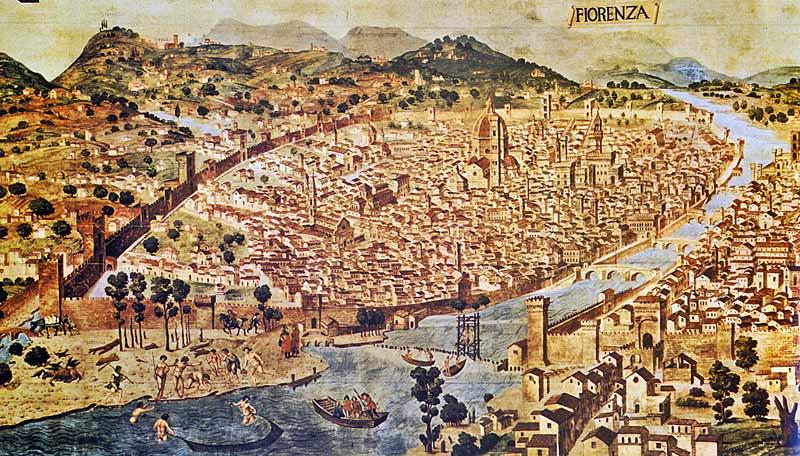
04 Aug Pinzochere
Pinzochere
Pinzochere: discover more
STORY OF THE PINZOCHERE: “BIZZE”, DEVOTION AND SUSPICION IN THE SHADOWS OF SANTA CROCE
In Italian dictionaries, at the entry for “pinzochera” you can find two synonyms: ‘bigot’ and ‘old maid’. Both give the idea of the reputation of the real pinzochere, which came about at the end of the 13th century in Florence. They were such an institution for the city that they gave their name to one of the streets that starts out from the Basilica of Santa Croce.Bizzo and “bizze”
The pinzochere were of the Third Order of Franciscans, and were lay people who lived according to the rules of Saint Francis. The confraternity was founded in 1285 and welcomed women who wanted to dedicate themselves to charity and especially to taking care of the Basilica of Santa Croce. The Franciscan order imposed a vow of poverty and the women wore clothes of a rough cloth called bizzo (bigio, that is to say gray), from which the word bizzocchera comes, then transformed into pinzochera.
Often these women were ex-prostitutes who wanted to change their lives, but there were also widows and unmarried women. The important thing, the rules underscored, was that they not be married. Thus the Florentines started to use the term bizza to indicate old maids and the expression ‘fare le bizze’ to describe a shrewish or moody attitude that is proverbially attributed to unmarried women. It was understandable that the pinzochere were defined as ‘bigots’. They lived in a community in the Convent, Convento di Santa Elisabetta del Capitolo, that is found alongside the Basilica of Santa Croce, between what is today Largo Bargellini and Via S. Giuseppe, and gave the name to Via delle Pinzochere. They took care of cleaning the Basilica and putting things in order, and they entered a side door called “porta delle pinzochere”.Devoted or Sinners?
It was probably starting from that very door that the rumors spread defining the pinzochere as anything but devoted. The insinuation was that they entered the church too early in the morning and that cleaning was just a pretext. Some stated that they went in even at night for reasons that were certainly not legitimate, and the naughty thoughts took shape, up to declaring with certainty, even though without proof, that there really was a secret passageway between the convent of the pinzochere and the monastery of the friars of Santa Croce. Whether it was only calumny, fed by the Florentines’ malice, or whether it really was hiding something true, the voices became more and more insistent, even if there was no proof about the presumed immorality of the pinzochere. The Grand Duke Cosimo I de’ Medici was convinced that the only way to keep the gossips quiet was to send the women away from Santa Croce. Thus, at the end of the Cinquecento, the pinzochere had to leave the convent. They had no other place to go, so they were divided up, going to live in monasteries, religious orders and private homes.
To remember them today, in addition to the street by the same name, there is the 14th century portico on the left side of the Basilica, called the Portico of the Pinzochere, and underneath its vaults, which are by now walled up, there is that door where the pinzochere crossed the threshold for three centuries.
The Places: Via delle Pinzochere, Basilica di Santa Croce, Piazza Santa Croce
We dedicated one of our suites to the Pinzochere. See it on our site and if you like it, reserve!
